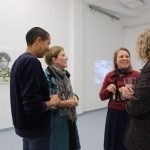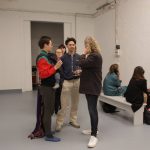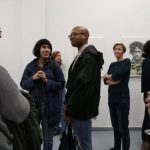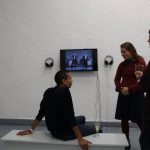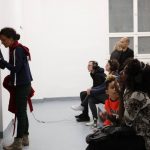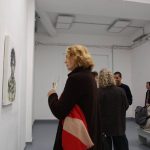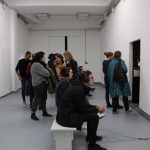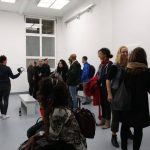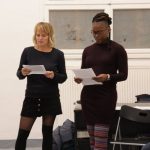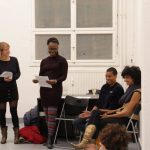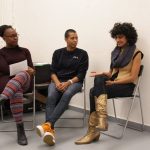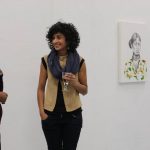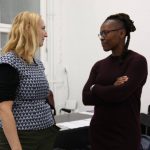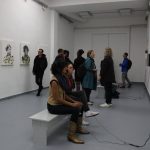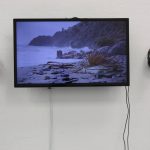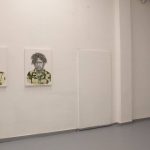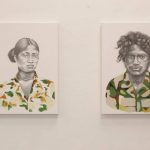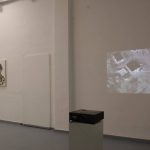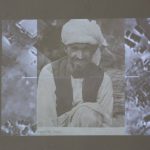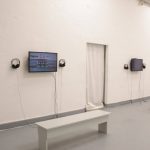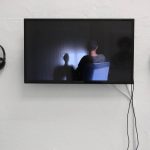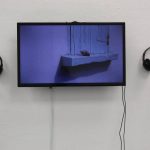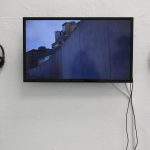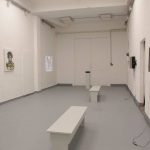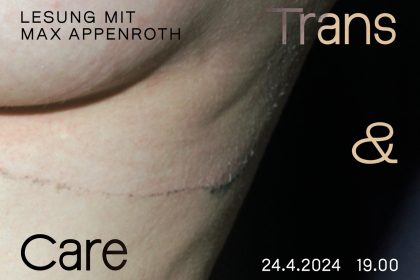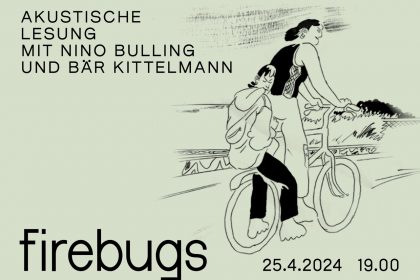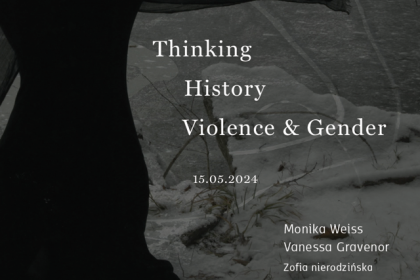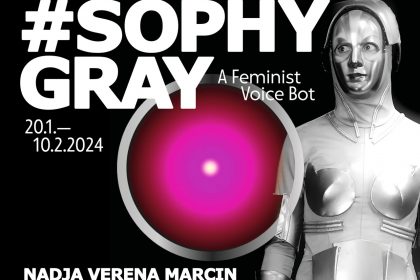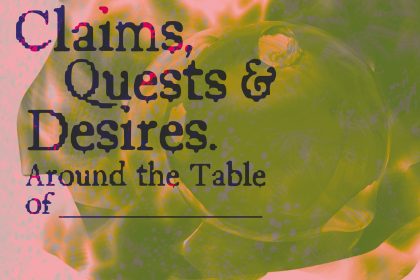Precarious Art: Artificial Boundaries
with Rajkamal Kahlon & Helen Cammock
curated by Dr. Stacie CC Graham, Dr. Katharina Koch and Dr. Marie-Anne Kohl
Exhibition @ alpha nova & galerie futura: 13.10.-18.11.2017, Wed..-Sat., 16:00-19:00
Exhibition in London: 8.12.-17.12.2017 @ 198 Contemporary Arts & Learning
video – installation – painting
Who tells whose story, and how? This is the central question of the exhibition and series of public programs Precarious Art: Artificial Boundaries, which deals with the possibilities of changing both every day and structural racism and sexist relationships long-term, as well as the corresponding writing of history in general and in the field of art specifically. Helen Cammock and Rajkamal Kahlon’s two-person exhibition explores how the writing(s) of history and representation are constructed, and particularly how race and gender determine visibility. Three workshops from the fields of writing, theater, and song artistically research what effective, self-empowering practices could be in order to reject the assignment of discriminatory attributes, to fill gaps in history, and to strengthen and normalize other narratives without relieving them of their political meaning.
The starting point is Cammock und Kahlon’s exhibition. Their works represent both the confrontation with one’s own self and history, as well as hegemonic historiography, which categorically marginalizes black artists and artists of color, or assigns them to their corresponding political identity niches. The artists confront these exclusions, gaps, and assigned roles with their own representational practices and the telling of individual histories. The works additionally represent the reappraisal and confrontation with racist representations of colonialism, whose powerful inscriptions reproduce and actualize themselves until the present day. The artists makes these processes visible in their works and counter them with their resolutely decolonizing perspectives.
Helen Cammock examines how individual and collective experiences embody the effects of structural inequality and thereby researches different social experiences, in particular representational systems. She presents two new video works in the exhibition: There’s a Hole in the Sky Part I and There’s a Hole in the Sky Part II: Listening to James Baldwin. The first takes up questions regarding cultural and human values. Cammock interacts with workers of one of the last sugar refineries in Barbados, as well as a sugar and rum plantation geared towards tourism in the island nation. The soundtrack that accompanies the film contains fragments of dialogue about work and cultural transfers created through the use of prose and song lyrics – the artist’s own texts, excerpts from newspapers, as well as texts from writers like Maya Angelou, among others – a separation between what is seen and what is heard. The second video work is an imagined conversation with the American writer James Baldwin. In this video, Cammock deals with the voluntary and involuntary migration history of black writers and dancers from America to Europe, where they hoped to find more recognition and work opportunities. The film explores the dynamic between appropriation and power on multiple levels. The levels of image and sound are also formally separated here and in their artistic recombination create a distinct language and aesthetic.
Rajkamal Kahlon uses images of colonialism – multiple materials from anthropological research from the late 19th and early 20th century – in order to juxtapose them with powerful, contemporary racist representational and behavioral practices in the wake of the “war on terror.” She explores the visual legacy of ruling systems and makes continuities in hegemonic visual language visible. At alpha nova & galerie futura, Kahlon shows the video work Peoples of Afghanistan (2016), a collage from found footage from the internet of an American bomber attack on Afghan territory and a slide projection with photographs of Afghan men. The photos were created in the 1960s during anthropological field research and were published under the title Physical Anthropology of Afghanistan. Two related canvas works from Kahlon’s series Blowback (2013) will be show: here too connections are established between colonial representational practices in the form of anthropological images and modern political violence, which runs under the label of terrorism. Through the transformation, fragmentation, and recombination of images, particularly of such colonized subjects, Kahlon frees them of their original connotation and gives them, their bodies and histories, back their dignity. Bodies in Kahlon’s works are therefore not only objects of political and intimate violence, but also become an (experiential)space for transformation and resistance.
The entire project Precarious Art: Artificial Boundaries is a further development of the exhibition and public program series Precarious Art: Protest and Resistance, which took place in 2015 at alpha nova & galerie futura. It addressed racism and sexism in the artworld, which particularly affects black artists and artists of color. Discriminatory structures as well as different strategies to counteract them were discussed with the participants. The subsequent project, Precarious Art: Artistic Borders follows the questions and discussions raised in the previous project and develops new artistic perspectives and modes to access the theme. Generating and disseminating knowledge in such a way that the oppressed are not compelled to educate the oppressors is central to this project. Instead, they presented themselves as a normalized yet particular political subject.
www.helencammock.co.uk
www.rajkamalkahlon.com
www.stacieccgraham.com
www.ekeneokobi.com


